Table of Contents
Introduction
The Emergence of AI in Agriculture
Agriculture has been the support system of human society throughout history, providing food security and livelihood generation everywhere.
Yet, with the fast-evolving world today, conventional farming can’t keep up with increasing food demand, remain profitable, and become environmentally friendly at the same time.
This is where artificial intelligence in agriculture enters as a game-changer, transforming the way farmers plant crops, deal with resources, and make key decisions.
With the help of contemporary technology such as sensors, predictive analytics, and intelligent algorithms, farmers are now capable of engaging in precision agriculture, conserving resources, and increasing efficiency.
The use of artificial intelligence in farming is not something in the distant future—it’s already occurring in agriculture fields around the globe. From aerial drones tracking plant health to machine learning systems forecasting weather patterns, AI is busy making farming smarter, greener, and more lucrative.
For farmers, the implication is they no longer need to use only experience or instincts; rather, they can use data-driven decisions to reduce risks and increase harvests.
Essentially, AI in agriculture is not just a technology enhancement—it is a new revolution in agriculture. It gives farmers information that was not conceivable before, and thus there are chances of making irrigation more optimal, pests manageable, and soil well-nourished.
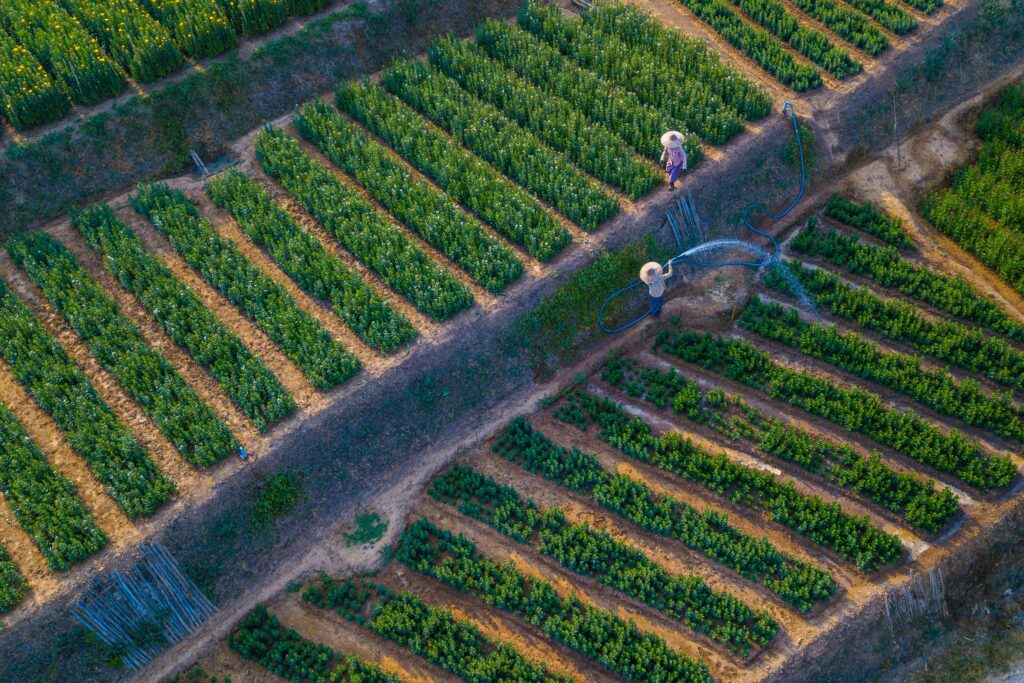
As populations across the world continue to grow, embracing AI will not only assist farmers to maintain their livelihood but also provide long-term food security to generations to come.
Advantages of AI in Agriculture
Improved Crop Monitoring and Yield Estimation
Among the most important advantages of AI for agriculture is that it can monitor crops in real-time and estimate yields with remarkable precision.
Previously, farmers used experience and visual examination to make judgments about the health of their crops, but this was often not sufficient and resulted in delayed identification of potential problems such as pests, diseases, or nutrient deficiency.
With the assistance of artificial intelligence in farming, sophisticated sensors, drones, and satellite data can survey massive fields, collecting information about soil humidity, plant development, and crop health.
Machine learning algorithms process the information to detect patterns human vision might overlook, like early stages of stress or disease. Such information allows farmers to act early, saving crops before damage can spread.
Furthermore, yield forecasting programs enable farmers to better prepare for the market, conserve resources, and minimize post-harvest losses. This not only increases productivity but also brings greater profitability while lessening uncertainty in agriculture.
Effective Management of Resources
Resource management has ever been a main challenge in agriculture, particularly with regard to water, fertilizers, and power. AI in agriculture brings with it precision farm methods that assist in maximizing the utilization of these resources.
Artificially intelligent irrigation systems that monitor weather patterns, soil types, and crop needs only supply water when and where needed, thus avoiding wastage of water and conserving one of the most valuable natural resources.
Likewise, AI-based fertilizer recommendations provide assurance that the right amount of nutrients is delivered, preventing overuse that damages crops as well as the environment. Farmers also gain by minimizing input costs, which makes farming more sustainable and environmentally friendly.
With real-time data and machine learning algorithms, farmers are able to make better decisions that minimize reliance on guesswork, eliminate unnecessary spending, and increase efficiency overall.
Better Pest and Disease Management
Pests and diseases are among the major causes of crop loss globally. Previously, any early detection of infestation was a problem for farmers as they mostly got to know of the issue when a lot of damage was done.
With the application of AI in agriculture, disease and pest management has greatly evolved. Employing image recognition and predictive modeling, AI can examine images of crops to identify initial infections or infestations caused by pests.
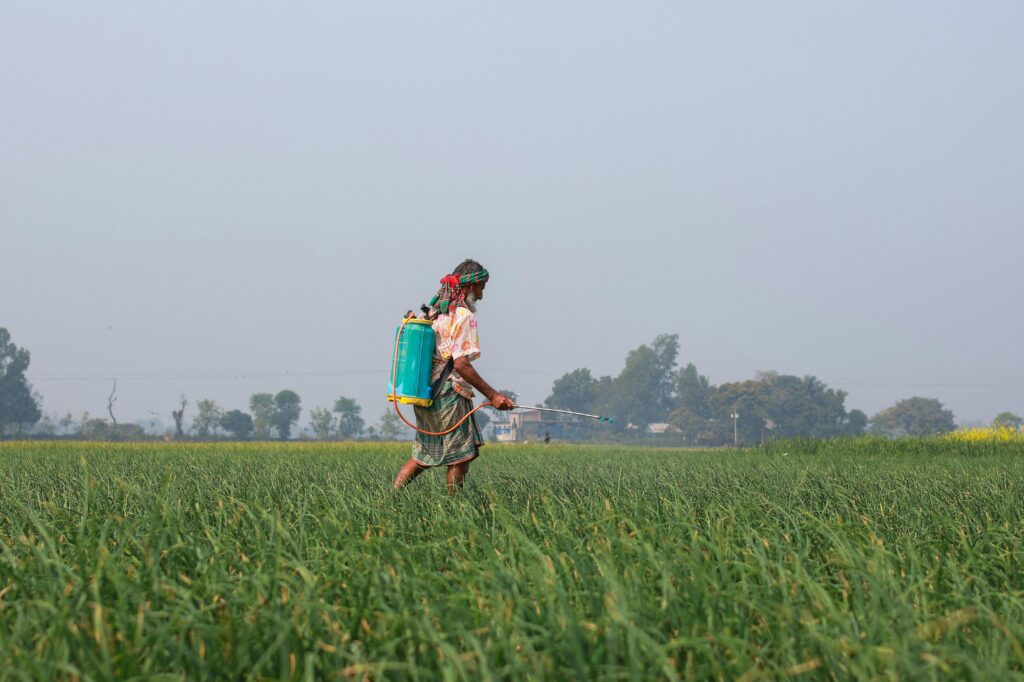
Machine learning algorithms can then suggest the best possible treatment, whether it is a targeted pesticide application or an organic remedy. This not only saves crops but also reduces the excessive use of chemicals, making farming healthier and more environmentally friendly.
Furthermore, artificial intelligence in agriculture allows for continuous monitoring, giving farmers timely alerts so they can respond quickly. This forward-looking strategy is what keeps the quality of crops up, guarantees more yields, and minimizes the financial losses that occur due to crop failure.
Methods of AI in Agriculture
Precision Agriculture with AI
Precision agriculture is perhaps the most revolutionary use of AI in agriculture. It means applying innovative technologies to the task of making every seed, drop of water, and gram of fertilizer count.
With AI-driven support, farmers are able to gather and process information from drones, satellites, and IoT sensors installed in fields. Such systems monitor key parameters like soil humidity, nutrient content, and crop growth patterns.
Machine learning algorithms process this data to provide farmers with actionable insights on when and how much to irrigate, fertilize, or harvest. This does away with guesswork, saves resources, and increases productivity.
Precision agriculture also assists in detecting micro-variations on a given field, enabling farmers to treat one section differently from another based on its specific needs.
This not only guarantees increased yields but also makes agriculture more sustainable, minimizing the effect on the environment that agricultural practices have.
Smart Irrigation Systems
Water management has always been a challenge in agriculture, particularly for areas that are drought-prone or have irregular rainfall. Artificial intelligence in agriculture has brought in intelligent irrigation systems that have the potential to transform how water is utilized in farming.
Such systems utilize sensors to monitor soil water levels and weather conditions and AI algorithms to determine the exact amount of water each crop needs. Rather than irrigating entire fields, water is supplied directly to the roots where it is needed most.
This conserves huge quantities of water and allows crops to be grown in the best conditions possible. By using artificial intelligence in agriculture in conjunction with advanced irrigation like drip systems, farmers can produce more while saving one of the world’s most valuable resources.
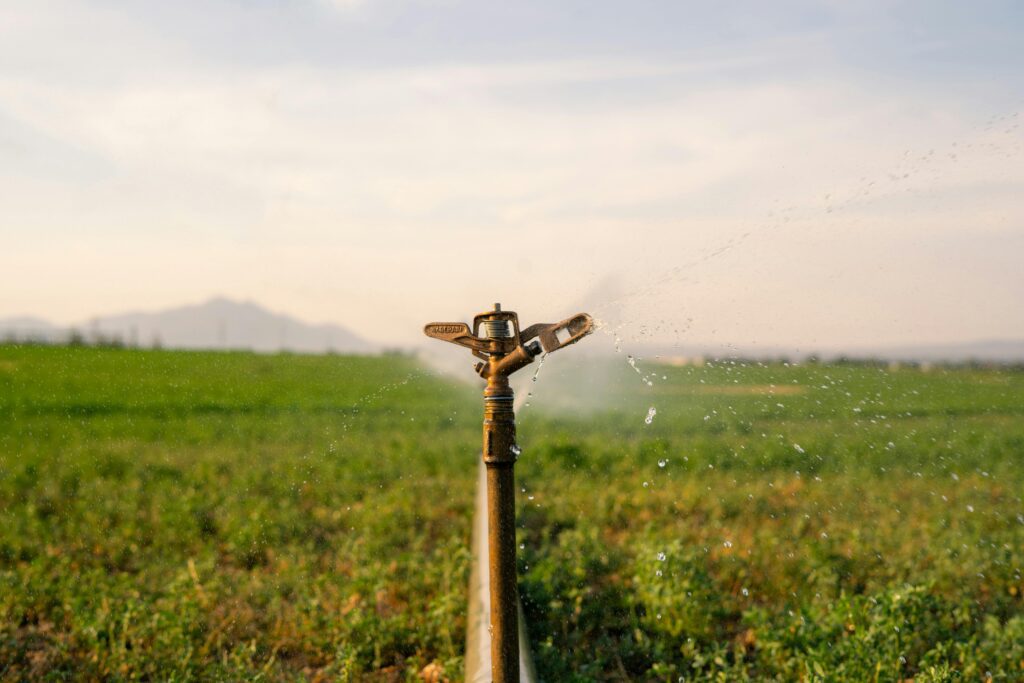
For instance, machine learning-based irrigation scheduling will avoid overwatering or underwatering, which results in plant stress and poor crop quality. This method has been embraced by innovative farmers in arid areas already, and it has been put to practical use in actual application.
Drone Technology and Crop Imaging
Drones are part of the modern farming process, and AI furthers their applicability. Fitted with high-resolution imaging equipment and sensors, drones can take close-up photographs of crops over large spaces in minutes.
These pictures are then analyzed by machine learning models to identify problems such as pest infestations, nutrient deficiencies, or abnormal crop growth.
This is one of the best methods of AI in agriculture because it allows farmers to monitor large-scale operations without physically checking every nook and corner of their land.
Apart from crop monitoring, drones can also be employed for spraying fertilizers or pesticides so that uniform coverage is provided and human effort is minimized.
Artificial intelligence in farming makes sure that drones not only collect data but also analyze it in a manner that gives farmers direct recommendations. It saves time, enhances precision, and enables farmers to make decisions fast based on insights.
Drone-based AI systems reduce labor and increase precision, remaking the practice of farming globally.
Challenges of AI in Farming
High Implementation Costs
Perhaps the biggest barrier to AI adoption in agriculture is the high upfront cost of adoption. Although technologies like drones, intelligent sensors, and machine learning-based software hold great long-term value, they call for a lot of money to be invested initially.
For small and marginal farmers, who constitute the majority of the farming population in most nations, this may prove to be a prohibitive expense. Hardware purchases, installing data networks, and equipment maintenance are further financial expenses.
Subscription-based farm management AI platforms can further add to the cost. While artificial intelligence in farming holds the potential to deliver more output and lower cost in the long term, there is fear among most farmers to implement it because they are financially constrained.
Closing this gap in affordability will be done through government subsidies, public-private partnerships, and awareness campaigns to explain the payback of using AI technologies to farmers.
Lack of Technical Knowledge and Training
Adopting advanced technologies in agriculture demands some technical knowledge in the farmers. Many farmers, however, particularly in rural towns, lack basic knowledge of running AI tools, mobile apps, or data-based decision systems.
This provides a constraint to the mass acceptance of AI in agriculture. Although the new generation of farmers will learn faster, farmers who are older in age tend to resist changing from conventional practices to technology-based operations.
Furthermore, machine learning platforms and artificial intelligence in agriculture platforms require constant updates and handling for them to provide effective results. Unless properly trained, farmers are likely to misuse the technology or not be able to unlock its complete potential.
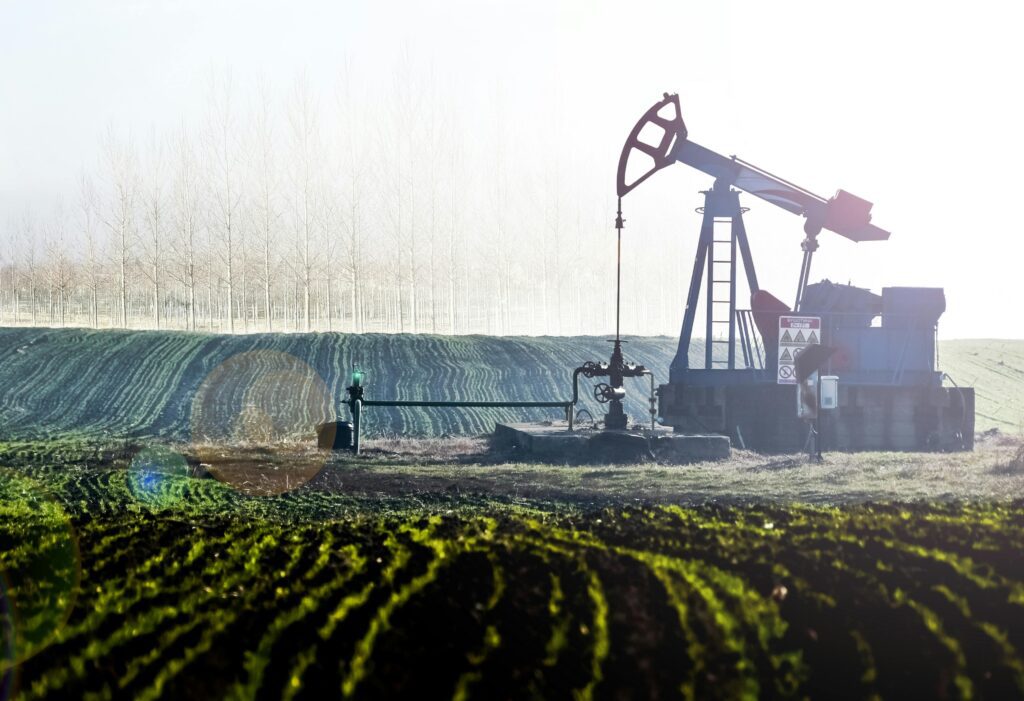
To address this, training workshops, mobile tutorials, and farmer-friendly AI applications with easy-to-use interfaces must be initiated catering to people with low digital literacy.
Data Privacy and Connectivity Issues
For AI in agriculture to be effective, huge amounts of data are required to be gathered, processed, and analyzed. This encompasses details about crop growth, soil quality, weather, and agricultural activities. Data privacy, though, is a principal area of concern.
Numerous farmers are concerned about the utilization of farm data and who gets access to it. Moreover, in isolation farming areas, poor network connectivity becomes a critical hindrance to the adoption of AI-based systems.
Machine learning algorithms tend to depend on cloud platforms, which need strong and stable internet connections to operate effectively.
Without them, artificial intelligence in farm tools is affected. In developing countries, where digital infrastructure is not yet established, farmers may struggle to implement AI even though it benefits them.
Overcoming these challenges involves the development of more robust data protection policies, an increase in rural internet connectivity, and offline products that are capable of working even in low-network regions.
Solutions for Breaking the Challenges of AI in Agriculture
Government Support and Subsidy
AI in agriculture must be made accessible through robust government support. The initial high cost often scares away small and marginal farmers from embracing new technologies, but the help of subsidies, grants, and low-interest loans can fill this gap.
Governments must also interact with private organizations and research institutions to create inexpensive AI devices suited to the specific needs of the local farmers.
For instance, the provision of subsidies on AI-based irrigation equipment or drone services will stimulate greater adoption so that even the small-scale farmers get the benefit of advanced technologies.
Also, pro-digital agriculture policies, along with tax relief for investing in artificial intelligence in agriculture, will help establish a favorable ecosystem.
When the government actively promotes AI integration, farmers will be more inclined to consider these technologies a practical solution, not a costly extravagance.
Farmer Training and Education Programs
Another key solution is to equip farmers with the knowledge and confidence to effectively utilize AI tools. Most farmers are reluctant to implement new technology since they have not been properly trained or fear it will be too complicated.
Through workshops, mobile-based training, and field demonstrations, authorities and agricultural entities can demystify the learning process. Training should be provided in local languages and emphasis laid on hands-on experiences and not merely theory.
Farmers will be able to witness for themselves how AI in agriculture enhances productivity, conserves resources, and mitigates risks. Additionally, agricultural universities and extension services can also partner with tech firms to develop farmer-friendly apps with easy-to-use interfaces.
Through the availability of artificial intelligence in agriculture through easy-to-use apps, farmers will embrace AI in their everyday activities. Making farmers digitally literate will make technology adoption long-lasting.
Better Infrastructure and Data Security
For AI to flourish in agriculture, stable infrastructure is imperative. Rural internet connectivity extension will provide farmers with seamless access to cloud-based platforms, real-time weather information, and decision-making tools powered by AI.
Governments and private entities must invest in the establishment of robust digital networks in agricultural areas, ensuring that connectivity problems do not impede technology uptake. Simultaneously, solving for data privacy is a key to gaining the trust of farmers.
Robust data protection policies, open usage guidelines, and secure AI platforms will instill confidence among farmers that their data is secure. Offering offline-enabled tools that can function even with sparse internet connectivity will encourage broader adoption.
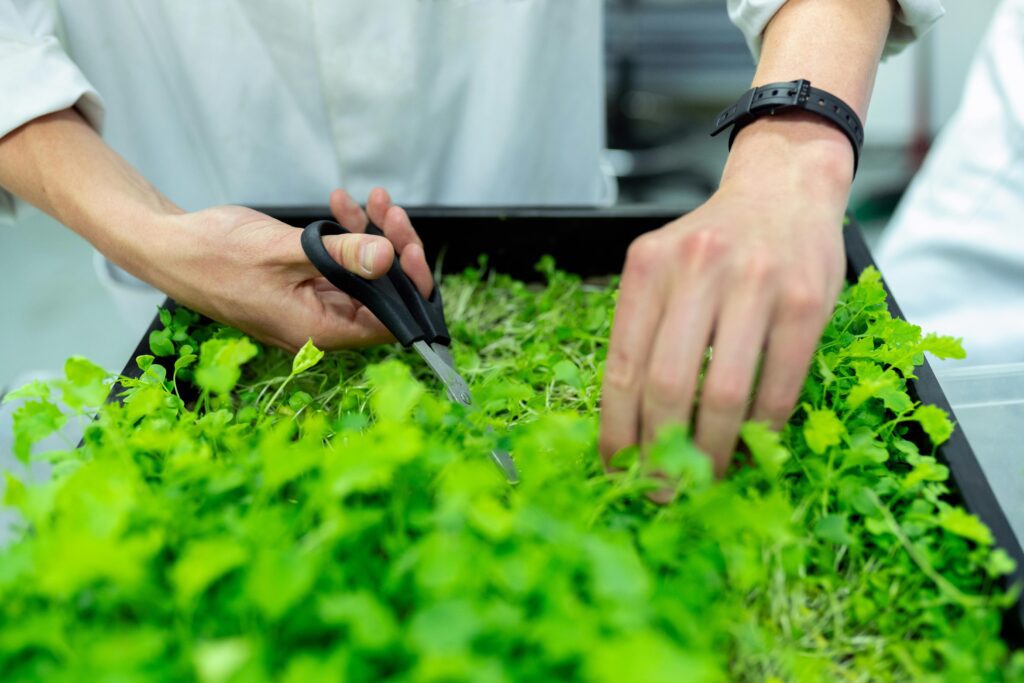
By integrating enhanced infrastructure with security of data, the advantages of AI in agriculture and artificial intelligence in farming can extend to even the farthest rural farming communities, making the agricultural digital revolution inclusive.
FAQs on AI in Farming
1. What is the difference between AI in agriculture and traditional agriculture?
Conventional farming is very much dependent on manual effort, experiential knowledge, and trial and error in decision-making, while AI farming deploys data-driven information and automation to enhance precision.
To illustrate, rather than making an educated estimate of when to water, AI systems examine soil moisture, plant vigor, and weather prediction to suggest the optimal watering schedule.
Likewise, artificial intelligence-based predictive models in agriculture can project yields or predict diseases in their early stages—something previously impossible using traditional methods.
In essence, AI eliminates uncertainty, enhances efficiency, and allows farmers to make data-driven decisions, which translate to improved productivity and resource utilization.
2. Are small farmers able to derive advantages from AI in agriculture?
Yes, small farmers can certainly take advantage of AI in agriculture, though cost is an issue. Low-cost options like AI-driven mobile applications, low-cost sensor packages, and drone rentals by the hour are bringing technology within reach.
Governments and NGOs are also launching subsidy programs and training initiatives to enable smallholders to use artificial intelligence in farming. For example, mobile applications with AI-driven image recognition are able to assist farmers in detecting plant disease by just snapping a photo.
These affordable, simple-to-operate equipment make it possible for even small farmers to enjoy the dividends of AI without having to spend big money on equipment.
3. How does machine learning work in agriculture?
Machine learning, one of the main branches of AI, has a core role to play in interpreting massive amounts of farm data. It is involved in the prediction of crop production, the detection of disease trends, and even market demand projections.
For instance, machine learning algorithms can analyze years of weather history to forecast upcoming rainfall patterns, allowing farmers to better plan their crop seasons. In AI farming, machine learning also supports precision agriculture by suggesting the precise quantity of water, fertilizer, or pesticide needed.
These analytical and predictive functions make artificial intelligence in farming more accurate, scalable, and dependable.
4. Is AI farming green?
Yes, one of the biggest strengths of AI in agriculture is its role in sustainable agriculture. Through the use of precision farming methods, AI avoids wastage of water, fertilizers, and pesticides. To name an example, intelligent irrigation systems supply water only where necessary to avoid wastage.
In the same way, AI-driven pest control makes sure chemicals are deployed with a minimum amount to protect the soil and environment. With the use of artificial intelligence in agriculture, farmers can implement eco-friendly practices that do not harm natural resources but are high-productive.
That way, AI is not only financially beneficial but also eco-friendly.
5. What does the future hold for AI in farming?
The future of AI in farming is very promising. With the improvement in robotics, automation, and machine learning, agriculture is transforming into a completely digitized environment. Farmers will soon be depending on autonomous tractors, AI-based drones, and robot harvesters to perform routine activities.
Real-time decision support will be delivered by cloud platforms, enabling farmers to optimize every cultivation stage. With increasingly cheaper and farmer-friendly tools becoming available, even smallholders will be able to access artificial intelligence for agriculture.
In the future, AI will make agriculture more sustainable, profitable, and climate-resilient, which will guarantee global food security for decades ahead.
Conclusion
The use of AI in agriculture is not only a technology trend but an imperative for the future of agriculture. With the world’s population continuing to grow and natural resources being more and more limited, farmers need to do things smarter and more resource-efficient to produce food.
AI delivers that solution with data-driven decision-making, improved crop monitoring, optimized irrigation, and enhanced pest control.
From precision farming to drone imaging and machine learning analytics, artificial intelligence in agriculture is transforming agriculture into an ever more sustainable, profitable, and eco-friendly activity.
Even with the clear advantages, obstacles like excessive costs, limited digital literacy, and connectivity are still detriments to adoption.
Yet, the right solutions—government subsidies, farmer training programs, and upgrading infrastructure—can counter these points of resistance and bring AI within reach for farmers of all sizes.
The future of agriculture is one of partnership—among technology firms, policymakers, and farmers themselves—so that innovation is shared by all, smallholder and large-scale alike.
In the years to come, we should anticipate AI becoming as vital in farming as tractors or irrigation systems used to be. Its role in reducing risks, increasing productivity, and saving the environment makes it a pillar of agriculture today.
For farmers, embracing AI in agriculture is not just about staying abreast of technology—it is about safeguarding incomes, assuring food security, and helping to create a better planet.
The time to adopt this digital revolution is now, since the future of agriculture will be determined by how fast we adopt and leverage the power of artificial intelligence in agriculture.

Pingback: Combine Harvester 7 Powerful Breakthroughs with Electric Tractors Revolutionizing Farm Equipment Near Me -
Exactly! Electric tractors are emerging as a sustainable alternative in agriculture. Just like electric cars reduce pollution on the roads, electric tractors help lower emissions on farms, cut fuel costs, and contribute to greener, more eco-friendly farming practices. 🌱